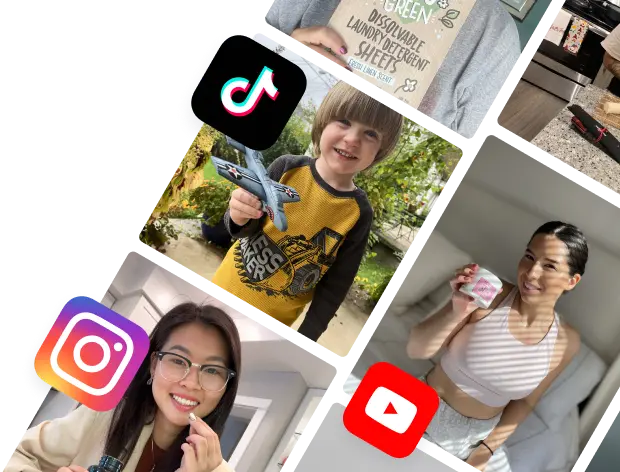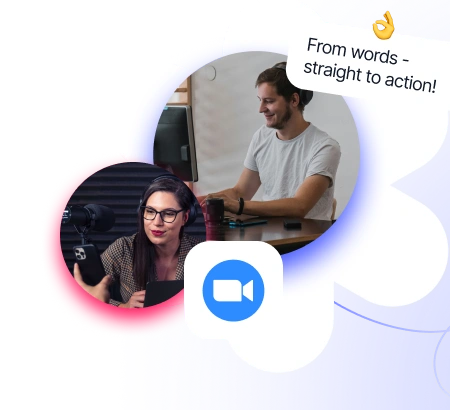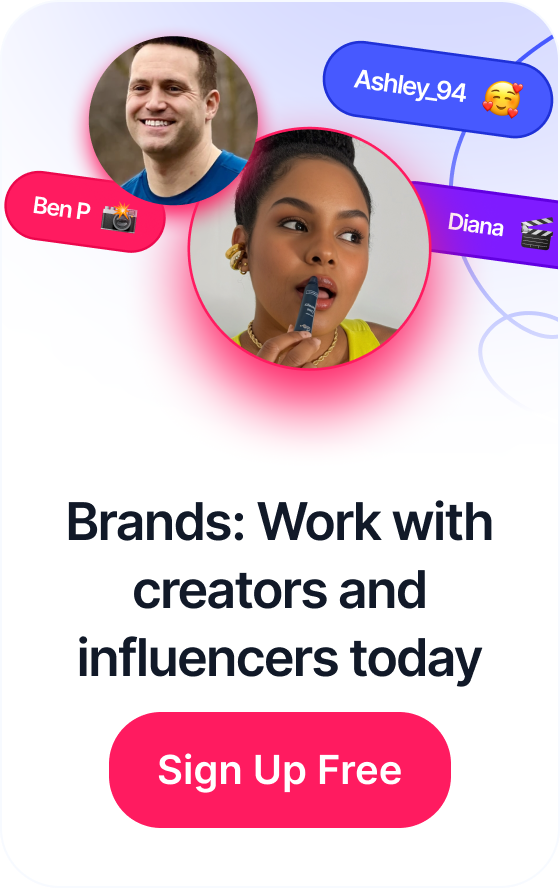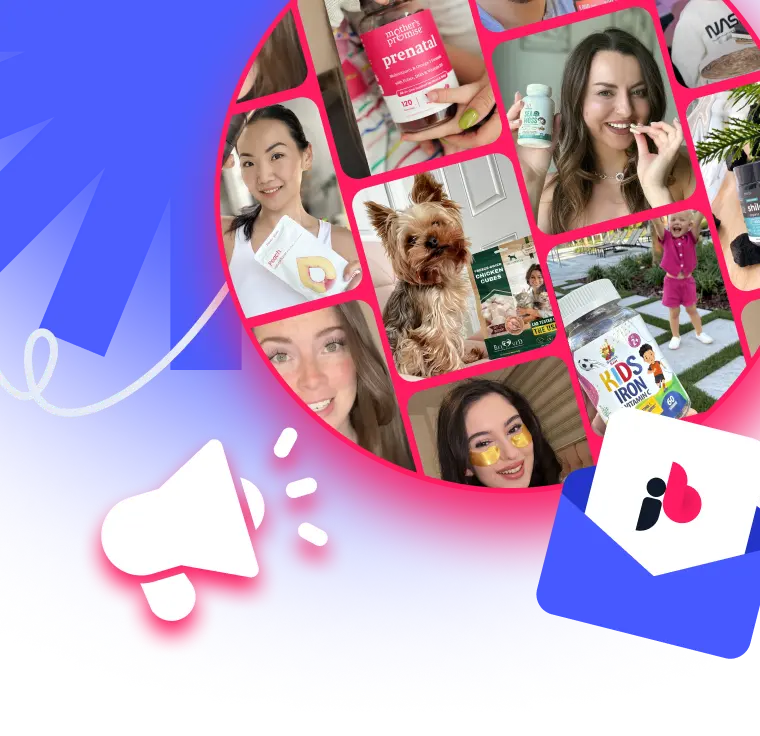 TikTok Spark Codes – The Ultimate Guide to Scaling Content
TikTok Spark Codes – The Ultimate Guide to Scaling Content
For small businesses, influencer marketing is a game-changer. It’s a powerful way to build real trust and get in front of niche audiences who are genuinely interested in what you have to offer. By partnering with creators—especially micro-influencers—smaller brands can see a massive return on investment without needing the kind of budget traditional advertising demands. It really does level the playing field, giving your brand a voice that actually connects with people.
Table of Contents
Why Influencer Marketing Is a Small Business Superpower
Let's bust a common myth right now: influencer marketing isn't just for mega-brands with bottomless bank accounts. For a small business, it's not just another channel to check off your list. It's a strategic weapon that builds something traditional ads almost never can: genuine trust.
Today's customers are smart. They can spot a polished corporate message from a mile away and are often skeptical. What they really want is authenticity, and that’s exactly what the right influencer delivers.
When a creator they already follow and trust recommends your product, it feels like getting advice from a friend, not a hard sales pitch. That kind of peer-to-peer validation is gold, especially if you're a newer brand trying to carve out a space for yourself in a crowded market.
To give you a clearer picture, here's a quick breakdown of why this approach works so well for businesses like yours.
Why Influencer Marketing Works for Small Businesses
| Benefit | Impact for Your Small Business |
|---|---|
| Authentic Trust | Builds credibility faster than traditional ads because recommendations come from a trusted source, not the brand itself. |
| Niche Audience Access | Puts your product directly in front of highly engaged communities that are already passionate about your specific industry. |
| High Engagement | Micro-influencers often have stronger relationships with their followers, leading to more comments, shares, and real conversations about your brand. |
| Cost-Effective ROI | Campaigns can be run on a lean budget with a mix of gifted products and small fees, delivering a strong, measurable return. |
| Genuine Content | You get authentic, user-generated-style content that you can repurpose across your own marketing channels, saving you time and resources. |
As you can see, the benefits go far beyond just getting your name out there. It’s about building a real, lasting connection with the right people.
Tapping Into Niche Communities
The real magic for small businesses happens when you partner with micro-influencers—creators who typically have between 10,000 and 100,000 followers. These people have built small but mighty communities around very specific interests, whether it's sustainable fashion, vegan baking, or local travel.
Working with them unlocks some serious advantages:
- Hyper-Relevant Audiences: Your message isn't just thrown into the void. It lands directly in the feeds of people who are already passionate about your niche, which means higher-quality leads for you.
- Exceptional Engagement Rates: Micro-influencers often see much higher engagement (likes, comments, DMs) than celebrity-level accounts. Their audience isn't just scrolling; they're actively listening and participating.
- Authentic Connection: Their content feels more like a real person sharing something they love, not a scripted ad. This makes their endorsements far more believable and effective.
Think of it this way: instead of shouting your message at a massive, indifferent crowd, you're whispering it directly to the people most likely to become your next loyal customers.
Driving Real Results on a Lean Budget
Maybe the most compelling reason for small businesses to jump on this strategy is the incredible return on investment. You don't need to shell out thousands for a single post. Many micro-influencers are happy to collaborate for gifted products, a small fee, or an affiliate commission. This makes launching a campaign much more accessible.
A well-planned influencer campaign can do so much more than just raise brand awareness. It can directly drive sales, push traffic to your website, and grow your own social following—all with measurable results that prove every dollar was well spent.
This isn't just a trend; it's a sustainable growth strategy. The influencer marketing industry is exploding and is projected to be worth around $32.55 billion globally by 2025. More importantly for businesses like yours, data from the 2024 Influencer Marketing Benchmark Report shows that brands earn an average of $4.12 for every $1 spent on Instagram influencer campaigns.
Of course, this strategy works best when it's part of a solid marketing plan that addresses the common small business marketing challenges many owners face. When you combine the targeted power of influencers with your broader efforts, you create a seriously powerful engine for growth. At the end of the day, influencer marketing gives your small business a chance to build a brand that truly resonates, connects, and converts.
Finding the Right Influencers on a Budget
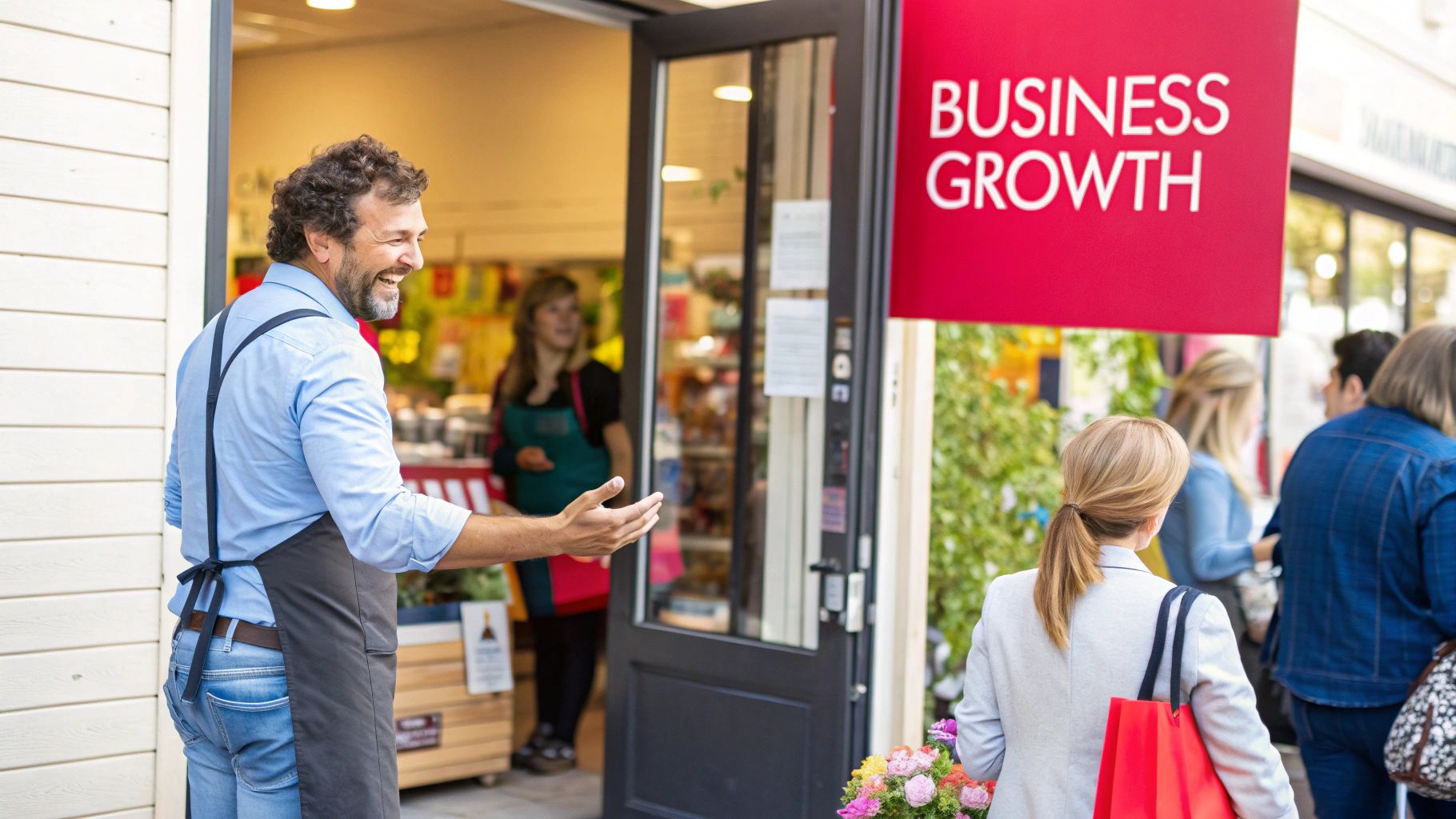
Let's get one thing straight: a successful influencer campaign isn't about landing a celebrity with a million followers. For small businesses, it's usually the exact opposite. Real success comes from finding creators who genuinely connect with your brand and, more importantly, speak the same language as your ideal customers.
Stop chasing huge follower counts. The numbers that actually move the needle are engagement rates, audience alignment, and content authenticity. Trust me, a micro-influencer with 15,000 super-engaged followers in your niche will almost always deliver better results than a macro-influencer with 500,000 who are just passively scrolling.
Look for Partners in Your Own Backyard
Your most powerful brand advocates might already be in your circle. Seriously. The best place to start your search is within your existing community of customers and followers. These are people who already know your brand, love your products, and make any collaboration feel natural from day one.
Make it a habit to check your social media channels for creators who are already giving you a shout-out.
- Tagged Photos and Mentions: Who’s posting about your products without you even asking? These organic mentions are pure gold for finding authentic fans.
- Comments and DMs: Keep an eye out for those followers who consistently leave thoughtful comments or send you messages. They're clearly invested in what you're doing.
- Branded Hashtags: See who’s using your unique hashtags. It’s a clear sign they’re an active part of your brand's world.
When you spot these people, take a closer look at their profiles. Do their values match yours? Is their content something you'd be proud to associate with your brand? If it’s a “yes,” you’ve just found a warm lead for a fantastic partnership.
Mastering Social Media Search and Discovery
Beyond your own followers, you can get proactive by using the search tools built right into the social platforms. It’s a manual process, sure, but it costs nothing and gives you a real feel for a creator’s personality and style.
Put yourself in your customer's shoes. What keywords or hashtags would they be searching for? If you sell handmade pottery, for instance, searching things like #potterylove, #handmademugs, or #localartisans will lead you straight to creators who live and breathe that niche.
When a profile catches your eye, don't just glance at the follower count. Do a little digging.
- Check Engagement Quality: Are the comments real conversations, or just a bunch of "nice post" replies from bots? Genuine interaction means they have a loyal, trusting audience.
- Analyze Audience Demographics: Many creators with business accounts can share audience insights from their media kits. Don't be shy—ask for it! You need to know if their followers are your target customers.
- Review Past Partnerships: Scope out their previous sponsored posts (usually tagged with
#ador#sponsored). Does the content feel forced, or does it fit seamlessly with their other posts?
The goal is to find someone whose endorsement feels like a genuine recommendation from a friend, not a scripted advertisement. Authenticity is the currency of influencer marketing for small businesses, and it's what drives real results.
If you want to go even deeper on discovery tactics, this guide on how to find influencers for your brand has some great strategies you can use right away.
Leveraging the Power of Micro and Nano Influencers
As a small business, every dollar in your budget counts. This is where micro-influencers (10k-100k followers) and nano-influencers (1k-10k followers) become your secret weapon. These creators often have ridiculously high engagement rates because they maintain a real, personal connection with their audience.
Even better, many of them are open to collaborations that don't involve a huge cash payment. You can get creative with your offers:
- Product Gifting: Send them free products in exchange for an honest review or a post. This is a super low-cost way to generate buzz and fresh content.
- Affiliate Commissions: Give the influencer a unique code or link that earns them a cut of every sale they drive. It’s a performance-based model, which is a total win-win.
- Cross-Promotion: Offer to feature the creator on your own social channels or in your newsletter. You give them exposure to your audience, and they do the same for you.
To really nail your outreach, it helps to understand what makes creators tick. Getting some insights into becoming an Amazon influencer can give you a valuable peek behind the curtain. When you understand their world, you can craft offers that stand out and build partnerships that actually last.
Crafting Your First Influencer Campaign
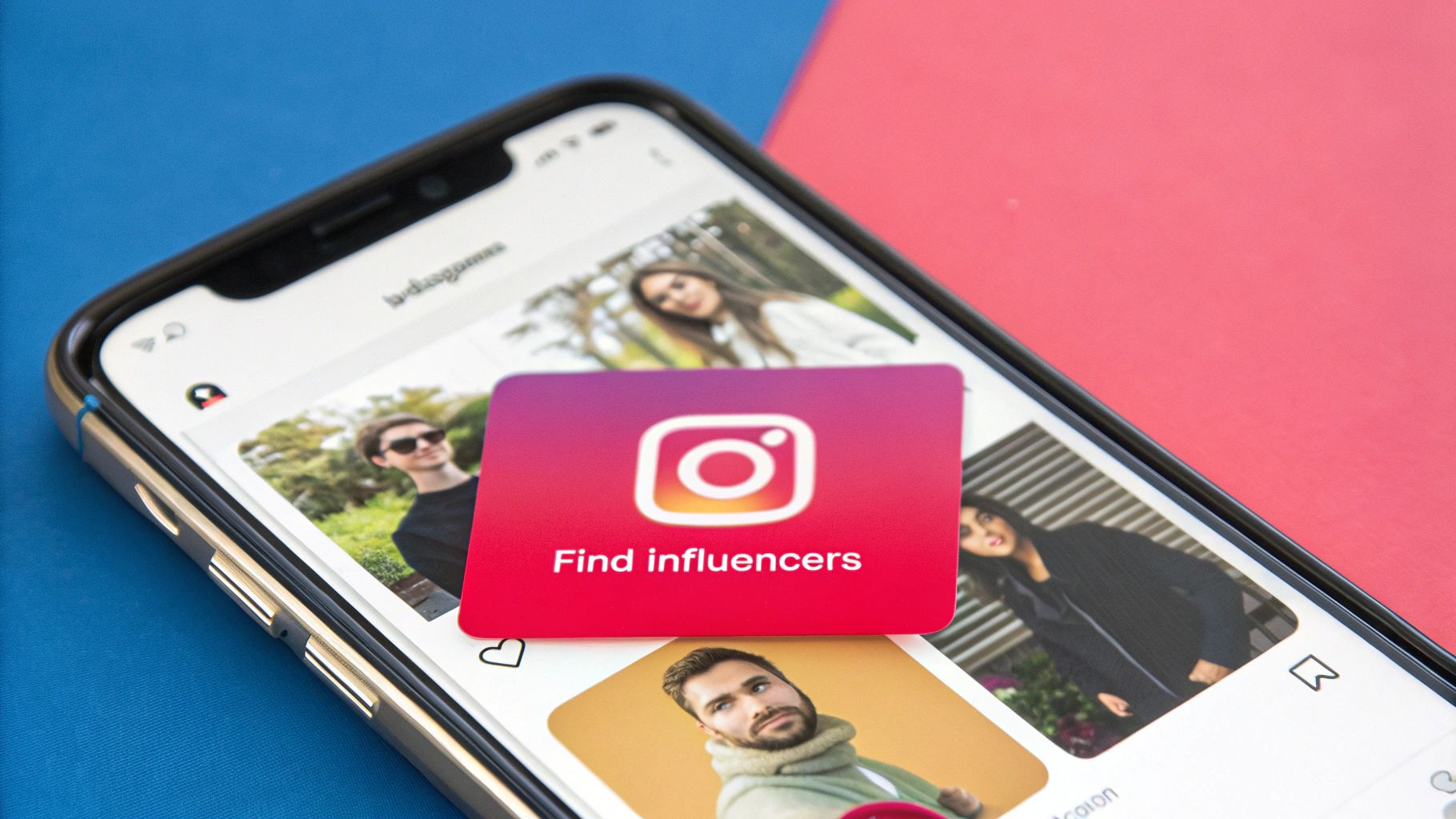
Alright, you've scouted some creators who look like a great fit. Now for the exciting part: turning that list of names into a real, living campaign. This is where your strategy starts to take shape.
Putting together your first influencer marketing for small businesses campaign can feel like a huge task, but it’s really just a series of small, manageable steps.
Let's be clear: a great campaign isn't about firing off free products into the void and crossing your fingers. It’s built on a foundation of clear goals, solid communication, and a vision you both share. Before you even draft that first DM, you have to know what winning looks like.
Setting Clear Campaign Goals
Your goals are the north star for every single decision you'll make, from the kind of content you ask for to how you measure success. Without them, you're flying blind. For a small business, your goals need to be specific, measurable, and tied directly to something that helps your bottom line.
So, what does success actually look like for you?
- Driving Sales: This is the most common one, and for good reason. You can track it easily with unique discount codes or affiliate links. A concrete goal could be to generate 50 sales from a single influencer's content.
- Increasing Brand Awareness: This one's a bit softer but still crucial. You'll be tracking metrics like post reach, impressions, and maybe a bump in your own follower count. A solid goal here might be to reach 100,000 new accounts in your target audience.
- Generating User-Generated Content (UGC): Sometimes, you just need amazing photos and videos for your own marketing. In that case, your goal could be to secure 3 high-quality video assets and 5 high-resolution photos you can repurpose.
Once you lock in that primary goal, everything else just clicks into place. A campaign designed to drive sales is going to feel completely different from one built to generate beautiful, evergreen content.
Mastering Your Initial Outreach
First impressions are everything. Your very first message can make or break a partnership before it even begins. Good influencers get slammed with generic DMs and emails every single day. If you want to stand out, you need to be personal, professional, and get straight to the point.
Please, don't just copy and paste the same template to twenty different creators. Take five minutes to make it personal. Mention a specific post of theirs you genuinely liked. Explain why you think their audience is the perfect match for what you're selling. It shows you've done your homework and respect their work.
A personalized outreach message that respects an influencer's time and creativity is far more likely to get a positive response than a generic, mass email. It’s the first step in building a collaborative, respectful partnership.
Your message should clearly outline the "what" and the "why" without dumping a novel on them. Briefly introduce your brand, explain why you're reaching out to them specifically, and give a quick teaser of the campaign idea. Always wrap up with a clear next step, like asking if they'd be open to hopping on a quick call to chat more.
Building an Effective Campaign Brief
Once a creator says, "I'm interested," it's time to send over a campaign brief. Think of this as the blueprint for your collaboration. It’s the document that gets everyone on the same page. It doesn't need to be a 20-page legal document—a simple, crystal-clear guide is all you need.
A solid brief prevents those classic "I thought you meant…" moments and gives the creator everything they need to knock it out of the park while still hitting your business goals.
Key Elements of a Campaign Brief
| Section | What to Include | Why It's Important |
|---|---|---|
| Campaign Overview | A one-paragraph summary of the campaign, its main goal, and the key message. | Gives the creator a quick, clear understanding of the project's purpose. |
| Content Deliverables | The exact number and type of posts required (e.g., 1 Instagram Reel, 3 Stories). | Sets clear expectations and avoids confusion about the scope of work. |
| Key Talking Points | 2-3 essential features or benefits of your product you want them to mention. | Ensures your core message is communicated without scripting their entire post. |
| Creative Guidelines | The "do's and don'ts," such as mentioning a specific call to action or avoiding certain topics. | Provides helpful guardrails while still allowing for creative freedom. |
| FTC Disclosure | A clear instruction to use appropriate hashtags like #ad or #sponsored. | This is a legal requirement that protects both your business and the creator. |
| Timeline | Key dates for drafts, final content approval, and posting schedules. | Keeps the campaign on track and ensures timely delivery of content. |
This brief is your foundational agreement. It gives influencers the structure they need to succeed while empowering them with the creative freedom to make content that feels authentic to their audience. That balance is the secret sauce to a campaign that feels genuine and gets real results for your small business.
Figuring Out Contracts and Compensation
Alright, let's talk about the part that makes a lot of small business owners nervous: the money and the paperwork. The good news? You don't always need a massive budget, and contracts don't have to be hundred-page legal nightmares. The real goal here is just to set crystal-clear expectations so you can build a solid, professional partnership from day one.
When it comes to paying creators, there's no one-size-fits-all answer. For a small business, smart influencer marketing means finding a compensation model that actually works for your budget and what you're trying to achieve. You have way more options than just cutting a big check, from simple product swaps to performance-based deals.
Common Ways to Pay Influencers
Thinking beyond a simple flat fee can open the door to partnerships that might have seemed out of reach. Each approach has its perks, so it's worth weighing them against your specific campaign goals.
- Product Gifting (In-Kind): This is the classic starting point for a reason. You give the influencer your product or service for free in exchange for some content. It's perfect for nano-influencers or when your main goal is just to get some authentic user-generated content (UGC) circulating.
- Flat-Fee (Pay-Per-Post): This is as straightforward as it gets. You agree on a fixed price for a specific deliverable, like one Instagram Reel and a few Stories. This model is great when you have a set budget and need to guarantee you'll get the content you're paying for.
- Affiliate Commissions: This is a pure performance play. The influencer gets a cut of every sale they generate through their unique link or code. It’s a super low-risk option because you only pay for actual results, which makes it a fantastic choice for campaigns focused squarely on driving sales.
- Hybrid Models: Why not mix and match? You could offer a smaller flat fee plus a commission on any sales. Or you could gift a product and add a small payment to cover the creator's time and effort. This flexibility can make a deal attractive to both sides.
The infographic below breaks down why smaller creators are often a much better financial fit for businesses with tight budgets.
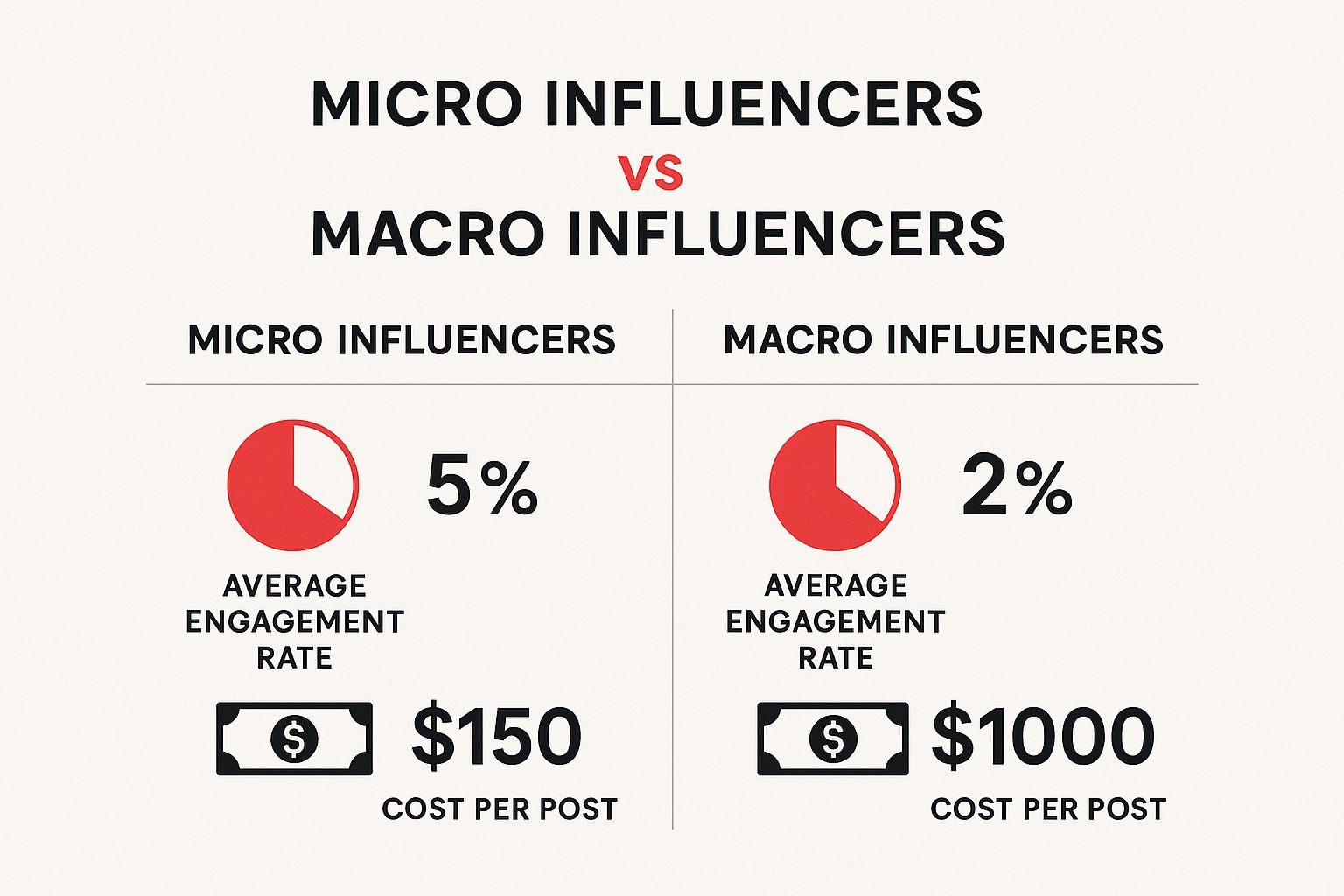
As you can see, while macro-influencers cast a wider net, you get way more bang for your buck with micro-influencers, who deliver significantly higher engagement at a fraction of the cost.
Setting a Realistic Budget
So, what should you actually expect to pay? The numbers are pretty friendly for small businesses. Brands are leaning heavily into smaller creators because they deliver better value. In fact, a recent look at the industry shows brands are increasingly partnering with nano-influencers (44%) and micro-influencers (26%).
The pricing is much more manageable. An Instagram nano-influencer might charge just $10-$100 per post, while micro-influencers typically fall in the $100-$500 range. Compare that to the $5,000-$10,000 a macro-influencer can command, and it's easy to see why this channel is so accessible for growing brands.
Don't be afraid to negotiate. Most creators are open to a conversation, especially if you’re proposing a hybrid deal or a long-term partnership. The key is to find that sweet spot where the collaboration feels like a win for everyone.
Payment Models at a Glance
To make it easier to decide, let's break down the most common compensation structures.
| Compensation Model | Best For | Pros | Cons |
|---|---|---|---|
| Product Gifting | Building initial buzz and collecting UGC from nano-influencers. | Low cash cost; fosters authentic-looking content. | Less control over content quality and posting schedule. |
| Flat-Fee | Specific, time-bound campaigns where you need guaranteed deliverables. | Predictable costs; clear expectations for both parties. | Can be expensive; payment isn't tied to performance. |
| Affiliate Commission | Driving direct sales and tracking ROI with precision. | Low risk (pay for results); highly motivating for influencers. | Harder to predict reach; may not work for awareness goals. |
| Hybrid Model | Securing talented creators while managing budget and risk. | Balances security for the creator with performance for the brand. | Can be slightly more complex to track and manage. |
Choosing the right model really comes down to what you want to achieve and what you can afford. Starting with product gifting or a small flat fee is often the best way to dip your toes in the water.
Why You Absolutely Need a Contract
I don't care if it's a simple product gift—get it in writing. An agreement protects you and the creator by making sure everyone is on the same page from the get-go. It’s not about mistrust; it’s about professionalism. A simple contract prevents awkward misunderstandings down the road.
Your agreement doesn't need to be written in complicated legalese. Just make sure it clearly covers the basics:
- Scope of Work: Be specific. What exactly are they creating? (e.g., "One 60-second Instagram Reel and three sequential Story frames with a link sticker.")
- Content Usage Rights: This is huge. How can you use their content? Can you put it on your website? Can you run it as a paid ad? Spell it out.
- Timeline and Deadlines: When is the draft due? How much time for revisions? When does it go live? Put dates on it.
- Compensation Details: State the exact payment amount, how you'll pay (PayPal, bank transfer), and when (e.g., "50% upfront, 50% on completion").
- Exclusivity Clause: Do you want to prevent them from working with a direct competitor for a month? If so, that needs to be in the contract.
- FTC Disclosure: You must require them to use the proper hashtags like
#ador#sponsored. This is a legal requirement, so make it mandatory.
Putting together a solid agreement is a critical step. This guide on what to include in an influencer agreement contract is a great place to start. And for more general advice, check out these excellent small business contract management tips to keep everything organized and professional.
Gauging Your Campaign's Success and ROI

Alright, your campaign is live. The content looks great, and the comments are buzzing. Now comes the big question: Did it actually work? This is where you connect the dots and prove that your influencer strategy is more than just a creative exercise—it’s a real driver for your business.
Let’s be honest, success in influencer marketing for small businesses isn't just about racking up likes and shares. While those "vanity metrics" are nice to see, they don't exactly pay the bills. The real win is tying an influencer’s post directly to your bottom line.
Moving Beyond Vanity Metrics
It's tempting to get swept up in a post that hits thousands of likes, but that's just the tip of the iceberg. True measurement zeroes in on the metrics that line up with the goals you set from day one.
These are the numbers that actually tell the story of your business's growth.
- Website Referral Traffic: Who actually clicked through from the influencer's post to your website? You can spot this easily in Google Analytics under the "Acquisition" report. Look for traffic coming from social media.
- Audience Growth: Did your brand's social accounts get a nice bump in followers after the content dropped? This is a great sign that the influencer’s audience was genuinely interested in what you have to offer.
- Conversion Rate: Of all the people who landed on your site from the campaign, how many actually did what you wanted them to do? This could be making a purchase, signing up for your email list, or downloading a guide.
- Sales and Revenue: The ultimate scorecard. How much cold, hard cash did the campaign generate?
Focusing on these key performance indicators (KPIs) gives you a clear, tangible picture of what your investment achieved.
Practical Tools for Tracking Success
Years ago, trying to attribute a sale to a specific influencer was a murky guessing game. Not anymore. Today, we have simple, powerful tools that deliver crystal-clear data. For any campaign aimed at driving sales, using these is non-negotiable.
The whole idea is to give each influencer a unique tracking asset. That way, when a purchase comes through, you know exactly which creator sent that customer your way.
Here are the three most effective methods I've seen work time and time again:
- UTM Parameters: These are just little snippets of code you tack onto the end of a URL. You can create unique UTM links for every single influencer, allowing you to track their specific source, medium, and campaign name right inside Google Analytics. It’s perfect for seeing exactly how many clicks and conversions each partner drives.
- Unique Discount Codes: This is easily one of the most popular and straightforward methods. Just give each influencer their own special code (like "CREATOR15") for their followers to use at checkout. Your e-commerce platform will then show you how many times each specific code was redeemed. Simple and effective.
- Affiliate Links: Similar to UTMs, affiliate links are unique URLs that track clicks and, more importantly, sales. When a customer buys something through an influencer's link, the creator gets a commission, and you get precise data on the revenue they generated.
Using these tools completely removes the guesswork from your reporting.
At the end of the day, data is your best friend. It transforms your influencer program from an experimental expense into a predictable, scalable engine for business growth.
Calculating Your Return on Investment
Once you have your data, figuring out your return on investment (ROI) is surprisingly simple. This is the single most important calculation you can do to prove that your influencer marketing for small businesses is actually profitable.
The basic formula is pretty straightforward:
(Revenue Generated - Total Campaign Cost) / Total Campaign Cost * 100 = ROI %
Let's walk through a quick, real-world scenario. Imagine you run a small business selling artisanal candles.
- You paid an influencer $300 for a campaign.
- You also sent them $50 worth of products as a gift.
- Your Total Campaign Cost is $350.
- That influencer’s unique discount code brought in $1,500 in sales.
Now, let's plug those numbers into our formula:
($1,500 - $350) / $350 * 100 = 328%
Your ROI on this one campaign is a massive 328%. For every single dollar you put in, you got back $3.28 in profit. This is the kind of hard data that justifies your marketing budget and helps you decide which influencers are worth partnering with again. If you want to go even deeper on this, our guide on measuring influencer marketing ROI breaks down more detailed frameworks.
By diligently tracking these metrics and calculating your ROI, you close the loop on your campaign. You're no longer just crossing your fingers for results—you're measuring them, learning from them, and building a smarter, more effective marketing machine with every collaboration.
Common Questions About Influencer Marketing
Jumping into influencer marketing can feel like learning a whole new language, and it’s totally normal to have a ton of questions. Let’s cut through the noise and tackle some of the most practical concerns I see from small business owners all the time.
Getting these figured out now will save you a world of headaches down the road.
How Do I Handle Gifted Product Collaborations?
Gifting products is a fantastic way to dip your toes into influencer marketing. But it's not as simple as just shipping a box and crossing your fingers for a shoutout. For this to work, you need a little structure.
First thing's first: always reach out and ask if the influencer is even interested in your product. Sending unsolicited packages is a fast track to being ignored.
Once they say yes, lay out the expectations in a simple agreement. This doesn't have to be a formal contract; a detailed email can work just fine. You could propose something like one Instagram Story and one feed post in exchange for the product. Since you're not paying them, you can't really demand anything, but you can certainly make a friendly suggestion.
The key to a successful gifted collab is framing it as a partnership, not a freebie. You're offering value with your product, and you're hoping for authentic exposure in return. It’s a value exchange, and approaching it this way helps build a much stronger, long-term relationship.
What Are the Rules for FTC Disclosures?
This one is a big deal and completely non-negotiable. The Federal Trade Commission (FTC) requires all paid or gifted partnerships to be clearly disclosed. It’s all about transparency, and it protects you, the creator, and the audience.
The disclosure needs to be impossible to miss. Hiding it in a sea of hashtags at the very end of a caption just won’t cut it.
- Clear Hashtags: The creator has to use obvious tags like #ad, #sponsored, or #brandpartner. These should be right at the beginning of the caption where people will actually see them.
- Platform Tools: Instagram, TikTok, and YouTube all have built-in "Paid Partnership" or "Includes paid promotion" labels. These are your best friend—make sure the influencer uses them.
- Verbal Callouts: For video content like Reels, Stories, or TikToks, the creator should also verbally mention that it’s a sponsored post. A quick "Thanks to [Your Brand] for sponsoring this video" works perfectly.
Ultimately, it’s your responsibility as the brand to make sure your partners are playing by the rules. I always recommend adding an FTC compliance clause to every single collaboration agreement.
Do I Really Need to Use Contracts for Small Deals?
Yes. A thousand times, yes. A contract, or even just a simple collaboration agreement, is your safety net for every single partnership, no matter how small. Don’t think of it as some scary legal document—it's just a tool to get everyone on the same page.
A straightforward agreement prevents misunderstandings about what you expect, when it’s due, and how they’ll be compensated. It also shows the creator you’re a professional who takes this partnership seriously. You don’t need a 30-page document from a lawyer; for most small campaigns, a single page is plenty.
Here’s what a simple agreement should cover:
- Deliverables: Spell out exactly what content is being created (e.g., one Reel, three Stories).
- Timeline: Set clear due dates for drafts and when the final content should go live.
- Compensation: State the exact payment amount or list the specific products being gifted.
- Content Usage Rights: Define how and where you can repurpose the creator's content (e.g., on your website, in ads).
- FTC Disclosure Reminder: Include a mandatory clause that they must follow FTC guidelines.
When Should I Scale My Influencer Program?
Knowing when to go from one-off campaigns to an always-on program is a great problem to have. The short answer? You're ready to scale when you're seeing consistent, positive results from your initial test campaigns.
Once you’ve found a handful of influencers who are genuinely driving sales or engagement, that's your green light. Think about moving them from single-post deals to a longer-term brand ambassador program. This builds much deeper authenticity and gives you a steady flow of content. At that point, it’s also time to create a repeatable system for finding, vetting, and onboarding new creators to keep the momentum going.
Ready to streamline your influencer campaigns and find the perfect creators for your brand? JoinBrands connects you with over 250,000 verified influencers and UGC creators, making it simple to launch, manage, and scale your marketing efforts all from one platform. Start building powerful partnerships today at https://joinbrands.com.

